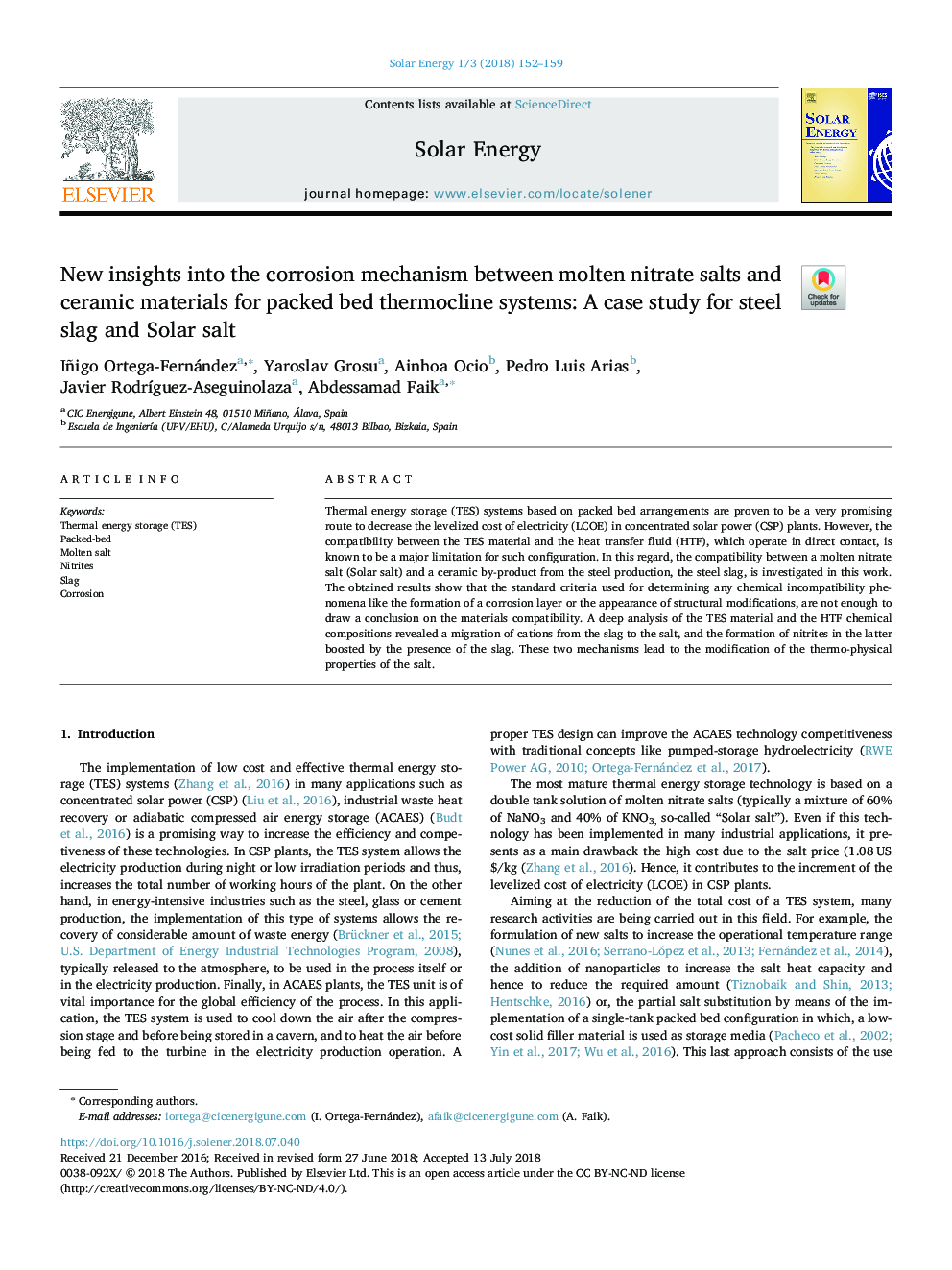| Article ID | Journal | Published Year | Pages | File Type |
|---|---|---|---|---|
| 7934907 | Solar Energy | 2018 | 8 Pages |
Abstract
Thermal energy storage (TES) systems based on packed bed arrangements are proven to be a very promising route to decrease the levelized cost of electricity (LCOE) in concentrated solar power (CSP) plants. However, the compatibility between the TES material and the heat transfer fluid (HTF), which operate in direct contact, is known to be a major limitation for such configuration. In this regard, the compatibility between a molten nitrate salt (Solar salt) and a ceramic by-product from the steel production, the steel slag, is investigated in this work. The obtained results show that the standard criteria used for determining any chemical incompatibility phenomena like the formation of a corrosion layer or the appearance of structural modifications, are not enough to draw a conclusion on the materials compatibility. A deep analysis of the TES material and the HTF chemical compositions revealed a migration of cations from the slag to the salt, and the formation of nitrites in the latter boosted by the presence of the slag. These two mechanisms lead to the modification of the thermo-physical properties of the salt.
Related Topics
Physical Sciences and Engineering
Energy
Renewable Energy, Sustainability and the Environment
Authors
Iñigo Ortega-Fernández, Yaroslav Grosu, Ainhoa Ocio, Pedro Luis Arias, Javier RodrÃguez-Aseguinolaza, Abdessamad Faik,
